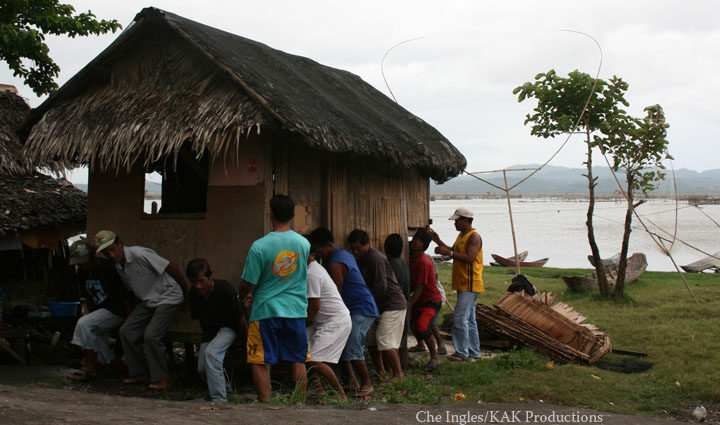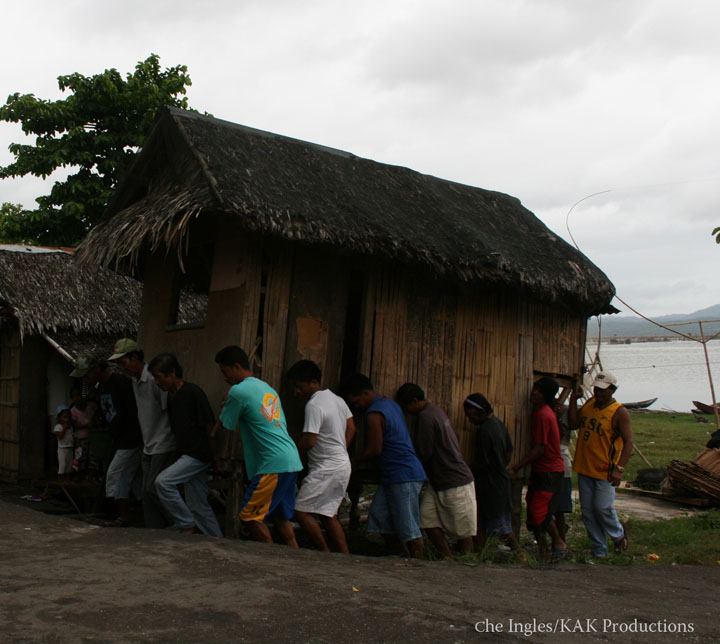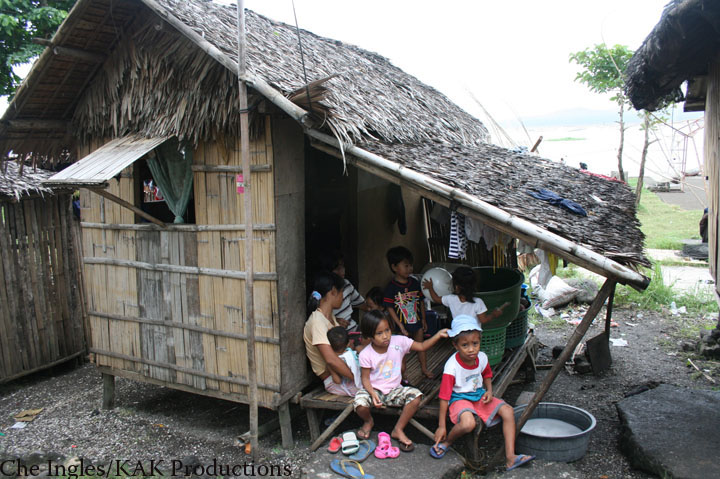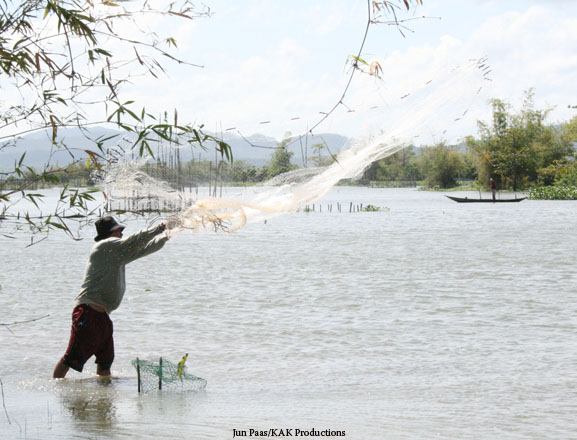By LUZ RIMBAN
IN A few months, the rains will come and their first stop will be the Bicol Region. Every year, many of the 20 or so typhoons that hit the Philippines strike land first in Bicol, bringing deadly floods and landslides.
Among the many areas usually hard hit by typhoons is the small fishing village of Sitio Rinaga in Barangay Sta. Cruz in the town of Bato, Camarines Sur. Rinaga lies on the shores of Lake Bato, a catch basin for the waters from all over Camarines Sur as well as its neighbor to the south, Albay.
Whenever the rains come, Lake Bato overflows and floods Sitio Rinaga, destroying homes and wiping out people’s livelihoods. “During heavy rains, the houses here get damaged, the fish disappear and strong waves ta ke away our bancas,” said fisherman Angeles Laut.
ke away our bancas,” said fisherman Angeles Laut.
The houses are small portable, one-room structures made of plywood, bamboo and nipa, the kind millions of impoverished rural Filipinos call home. To get their houses out of harm’s way, Rinaga’s fisherfolk would have pay their neighbors as much as P300 for the service of lifting and moving houses away from the shore. The amount is something fisherfolk can barely afford. Even if they could cough up the amount to move the houses to safety, they would still have to shell another P300 for the move back.
“When we have floods in October or November, sometimes it would be January or even before we are able to move our houses back,” said Laut.
That is now all in the past. Sitio Rinaga’s fisherfolk have recently adopted Uro Alsa, a community effort in which members help each other avoid the disastrous effects of floods. At the first sign of danger, community members no longer wait to be paid or to be told to help each other. Using a cart, menfolk together lift houses to higher ground. It is now second nature to them to voluntarily help their neighbors, in what community organizers call a revival of the Filipino tradition of bayanihan.
What caused this change was the functional literacy program conducted by the Universidad de Santa Isabel (USI) in Naga City, about an hour away from Bato. Illiteracy is a problem in Sitio Rinaga. Only 17 percent of the village’s 400 residents finished high school, and college graduates are rare.
USI’s Community Extension Service targeted the village as a beneficiary of its outreach program, in which adults were taught to read, write and do math. During one of their classes, the adults asked USI-CES staff members to not only teach them the reading, writing and computing, but also dealing with disasters, specifically the yearly floods. As a result, USI-CES developed the functional literacy lessons that included community-based disaster management into topics like community leadership and organizing.
topics like community leadership and organizing.
The functional literacy program , says USI-CES Director Delfin Bondad, taught Rinaga villagers to be self-reliant in managing disaster. “There are less people going to evacuation center and almost no houses got destroyed last year,’ Bondad said.
